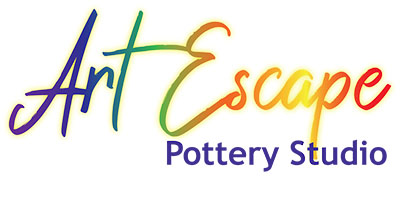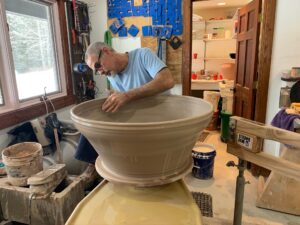Unlocking Artistic Fulfillment:
In the pursuit of fulfillment, many individuals find themselves searching for meaning and purpose in their lives, often turning to creative outlets as a source of joy and satisfaction. Pottery, with its rich history and endless possibilities for artistic expression, offers a unique opportunity for individuals to experience deep fulfillment in their craft. As participants immerse themselves in the transformative process of pottery making, they discover that true fulfillment cannot be bought—it must be earned through dedication, practice, and the guidance of an enlightened pottery teacher who serves as a beacon of inspiration and support along the way.
The Quest for Artistic Fulfillment
Artistic fulfillment is not simply about creating beautiful objects—it’s about tapping into a deeper sense of purpose and satisfaction that comes from fully immersing oneself in the creative process. For many individuals, pottery offers a pathway to this elusive state of fulfillment, providing a canvas for self-expression, exploration, and personal growth. As participants hone their skills and develop their artistic voice, they experience a profound sense of accomplishment and joy that transcends material possessions and external validation.
Earning Fulfillment Through Mastery
True fulfillment cannot be bought or acquired through external means—it must be earned through dedication, perseverance, and the relentless pursuit of mastery in one’s craft. In the world of pottery, participants experience this journey firsthand as they work tirelessly to refine their skills, experiment with new techniques, and push the boundaries of their creativity. With each pottery class attended and each piece created, participants inch closer to mastery, earning a sense of fulfillment that is both deeply satisfying and profoundly rewarding.
The Role of an Enlightened Pottery Teacher
In the quest for artistic fulfillment, the guidance of an enlightened pottery teacher is invaluable. With their wealth of knowledge, experience, and passion for the craft, pottery teachers serve as mentors and guides, inspiring students to reach new heights in their artistic journey. Whether offering technical instruction, creative guidance, or emotional support, an enlightened pottery teacher creates a nurturing and supportive environment where students can explore their creativity, overcome challenges, and unlock their full potential as artists.
Finding Fulfillment in the Studio
The pottery studio is a sacred space where participants can escape the noise and distractions of the outside world and fully immerse themselves in the transformative process of creation. Here, amidst the hum of spinning wheels and the earthy scent of clay, participants find solace, inspiration, and a sense of belonging that is deeply fulfilling. With each pottery class attended, participants experience moments of flow and immersion that transport them to a state of pure creativity and joy, leaving them feeling fulfilled and invigorated.
Conclusion: The Journey to Artistic Fulfillment
In the journey of pottery making, artistic fulfillment is not just a destination—it’s a continuous and evolving process of self-discovery, growth, and expression. As participants immerse themselves in the creative process, they experience moments of deep satisfaction and joy that come from fully engaging with their craft and pushing the boundaries of their creativity. With the guidance of an enlightened pottery teacher, participants find support, encouragement, and inspiration along the way, making the journey to artistic fulfillment all the more enriching and rewarding. So, whether you’re a novice potter or a seasoned ceramic artist, embrace the journey of pottery making with an open heart and a curious mind, and watch as fulfillment unfolds before you, one clay-covered hand at a time.
Title: Sustainable Creativity: Exploring Recycled Art in Pottery Lessons
As society becomes increasingly aware of the importance of sustainability and environmental stewardship, the concept of recycled art has emerged as a powerful means of repurposing materials and reducing waste. In the realm of pottery, where creativity knows no bounds, incorporating recycled materials into the artistic process offers a unique opportunity for artists to create eco-friendly creations that are both beautiful and sustainable. With the ability to recycle unused clay and incorporate found objects into their pottery pieces, participants in pottery lessons can explore the endless possibilities of recycled art while making a positive impact on the planet.
Embracing Sustainability Through Recycled Art
Recycled art, also known as upcycling or repurposing, involves taking discarded materials and transforming them into new and unique works of art. In pottery, participants have the opportunity to incorporate recycled materials such as glass shards, metal scraps, and even plastic fragments into their clay creations, adding texture, color, and dimension to their pieces. By embracing recycled art, participants not only reduce their environmental footprint but also raise awareness about the importance of sustainability and resource conservation.
The Benefits of Working with Recycled Materials
Working with recycled materials offers a multitude of benefits for both artists and the environment. For artists, incorporating recycled materials into their pottery pieces adds an element of creativity and innovation, allowing them to experiment with unconventional materials and push the boundaries of traditional pottery making. From creating unique textures and surface treatments to adding visual interest and depth to their pieces, recycled materials offer endless possibilities for artistic expression. Additionally, by utilizing recycled materials, artists can reduce their production costs and minimize their reliance on virgin resources, making pottery more accessible and sustainable for all.
The Versatility of Recycled Clay
One of the greatest advantages of working with clay is its recyclability. Unlike other art mediums that produce waste with each creation, clay can be reused and recycled indefinitely, making it a highly sustainable material for artistic endeavors. In pottery lessons, participants have the opportunity to reclaim and recycle unused clay scraps, trimmings, and failed pieces, transforming them into new creations without any loss of quality or integrity. This not only reduces waste but also encourages participants to experiment freely and fearlessly, knowing that any mistakes or missteps can be easily remedied through recycling.
Fostering Creativity and Resourcefulness
Incorporating recycled materials into pottery lessons fosters creativity, resourcefulness, and a sense of environmental responsibility among participants. By encouraging participants to think outside the box and look for inspiration in unexpected places, recycled art challenges artists to rethink their approach to pottery making and embrace the beauty of imperfection and unconventional materials. Through hands-on experimentation and exploration, participants discover the joy of creating something beautiful from materials that others might discard, fostering a deeper appreciation for the inherent value and potential of recycled art.
Conclusion: Nurturing Creativity and Conservation
In pottery lessons, recycled art offers a powerful means of fostering creativity, conservation, and community engagement. By incorporating recycled materials into their pottery pieces, participants not only create beautiful and unique works of art but also make a positive impact on the planet by reducing waste and promoting sustainability. With the ability to recycle unused clay and repurpose found objects, pottery becomes more than just an artistic endeavor—it becomes a catalyst for environmental stewardship and creative expression. So, whether you’re a beginner potter or an experienced ceramic artist, embrace the possibilities of recycled art in pottery lessons and discover the transformative power of sustainability and creativity combined.

